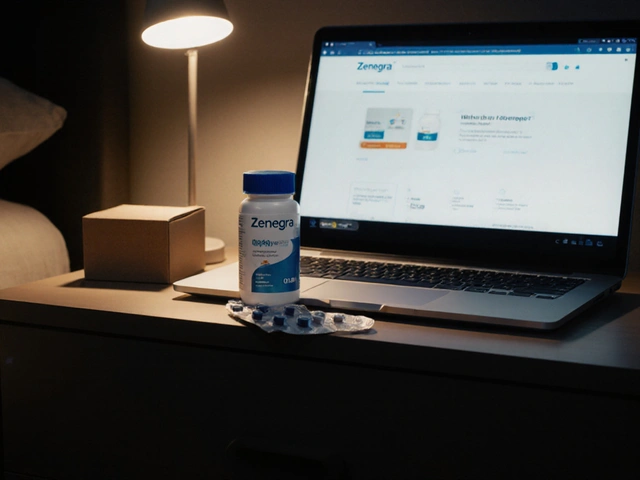Genotype 3 Chronic Hepatitis C is a form of hepatitis C virus (HCV) infection that carries the genetic signature known as genotype3. It accounts for roughly 30% of global HCV cases, is linked to faster fat‑accumulation in the liver, and often responds well to modern direct‑acting antivirals (DAA) when treated early.
What Makes Genotype3 Different?
HCV is classified into seven major genotypes (1‑7). Genotype3 carries a unique set of mutations that influence disease course and treatment response. Compared with genotype1, it tends to cause steatosis (fatty liver) more quickly, but it is also among the most “DAA‑friendly” when the right regimen is chosen.
Typical Symptoms and Why They Occur
- Fatigue - the liver’s reduced ability to clear toxins leads to a constant feeling of low energy.
- Joint and muscle aches - immune activation against infected liver cells can spill over into the musculoskeletal system.
- Digestive discomfort - bloating, nausea, and mild abdominal pain arise from altered bile flow.
- Dark urine and pale stools - a sign of impaired bilirubin processing.
- Loss of appetite - cytokine release can suppress hunger signals.
These manifestations are not unique to genotype3, but the rate at which they appear can be faster due to the steatosis factor.
Lifestyle Strategies to Tame the Symptoms
While medication does the heavy lifting, everyday choices can dramatically affect how you feel.
- Balanced Nutrition: Aim for a Mediterranean‑style diet-lots of leafy greens, fatty fish, nuts, and olive oil. Limit refined carbs and saturated fats, which worsen liver fat buildup.
- Hydration: 2-3 liters of water a day helps the liver flush metabolites.
- Regular Exercise: 150 minutes of moderate aerobic activity weekly (e.g., brisk walking, cycling) reduces hepatic fat and lifts energy levels.
- Alcohol Moderation: For genotype3, even modest drinking can accelerate fibrosis. Ideally, abstain or keep intake under 10g per day.
- Smoking Cessation: Nicotine compounds oxidative stress; quitting improves overall liver resilience.
Medication Management and Monitoring
Modern direct‑acting antivirals are oral drugs that target specific HCV proteins, halting viral replication. For genotype3, regimens such as sofosbuvir/velpatasvir (12weeks) or glecaprevir/pibrentasvir (8weeks) achieve cure rates over 95% when adhered to.
Key monitoring steps:
- Liver Function Tests (LFTs) - ALT, AST, bilirubin every 4weeks during therapy.
- Fibrosis Assessment - transient elastography (FibroScan) before, at end of treatment, and 12weeks post‑treatment.
- Viral Load - quantitative PCR at baseline, week4, end of treatment, and 12‑week follow‑up to confirm sustained virologic response (SVR).
If ribavirin is added (occasionally needed for cirrhosis), monitor hemoglobin weekly.
Mental Health and Support Networks
Chronic illness can take a toll on mood. Studies from 2023 report that 38% of HCV patients experience depressive symptoms, often linked to fatigue and stigma. Practical steps:
- Schedule brief weekly check‑ins with a mental‑health professional.
- Join a local or online HCV support group-sharing experiences reduces isolation.
- Practice mindfulness or gentle yoga to lower cortisol levels.
- Consider counseling if you notice persistent sadness, anxiety, or sleep disturbances.

Vaccinations and Preventive Care
While you can’t vaccinate against HCV, protecting the liver from other infections is crucial. HepatitisA andB vaccines are recommended for all chronic HCV patients. In addition, annual flu shots and a pneumococcal vaccine (if over 60 or with cirrhosis) help avoid secondary liver stress.
When to Seek Immediate Medical Attention
Even with optimized management, certain warning signs demand prompt evaluation:
- Sudden increase in abdominal pain or swelling (possible ascites).
- Jaundice that worsens rapidly.
- Confusion, altered mental status (possible hepatic encephalopathy).
- Bleeding gums or easy bruising (coagulopathy).
Contact your hepatology team right away if any of these appear.
Genotype3 vs. Other Genotypes: A Quick Comparison
| Attribute | Genotype3 | Genotype1 |
|---|---|---|
| Global prevalence | ~30% of infections | ~45% of infections |
| Typical disease progression | Faster steatosis, earlier fibrosis | Slower fibrosis, less steatosis |
| DAA cure rates (modern regimens) | 94-98% (8‑12weeks) | 95-99% (8‑12weeks) |
| Common treatment regimen | Sofosbuvir/Velpatasvir or Glecaprevir/Pibrentasvir | Sofosbuvir/Ledipasvir or Glecaprevir/Pibrentasvir |
| Impact of alcohol | High - accelerates fibrosis | Moderate - still harmful |
Related Concepts Worth Exploring
Understanding your genotype opens doors to deeper topics. You might later read about liver transplantation criteria, the role of fibroelastography in staging, or how host genetic factors (like IL‑28B) influence treatment response. Each of these areas builds on the foundation laid here.
Frequently Asked Questions
Can I cure genotype3 hepatitisC without ribavirin?
Yes. Modern DAA combinations like sofosbuvir/velpatasvir or glecaprevir/pibrentasvir achieve cure rates above 94% without ribavirin in treatment‑naïve patients and most non‑cirrhotic cases.
Is alcohol completely forbidden for genotype3 patients?
While occasional modest intake may be tolerated, the safest approach is full abstinence because alcohol synergizes with genotype3‑related steatosis, speeding fibrosis.
How often should I get liver function tests while on DAA therapy?
Most clinicians order LFTs at baseline, then every four weeks during treatment, and once more at the end‑of‑treatment visit.
Will fatigue improve after I achieve SVR?
For most people, fatigue lessens within weeks to months after sustained virologic response, especially when lifestyle changes-like regular exercise and balanced diet-are maintained.
Do I need vaccinations if I’m already infected with HCV?
Yes. HepatitisA andB vaccines protect the liver from additional viral insults, which is especially important in chronic HCV patients.
What support groups are available for HCV patients?
National liver foundations, local hospital outreach programs, and online forums such as HepatitisC.org or Reddit’s r/HepC provide peer support, educational resources, and a space to share experiences.
Can a healthy diet reverse liver fibrosis in genotype3?
A Mediterranean diet can halt or modestly improve fibrosis scores, but reversal typically requires a combination of diet, abstinence from alcohol, and successful antiviral cure.






